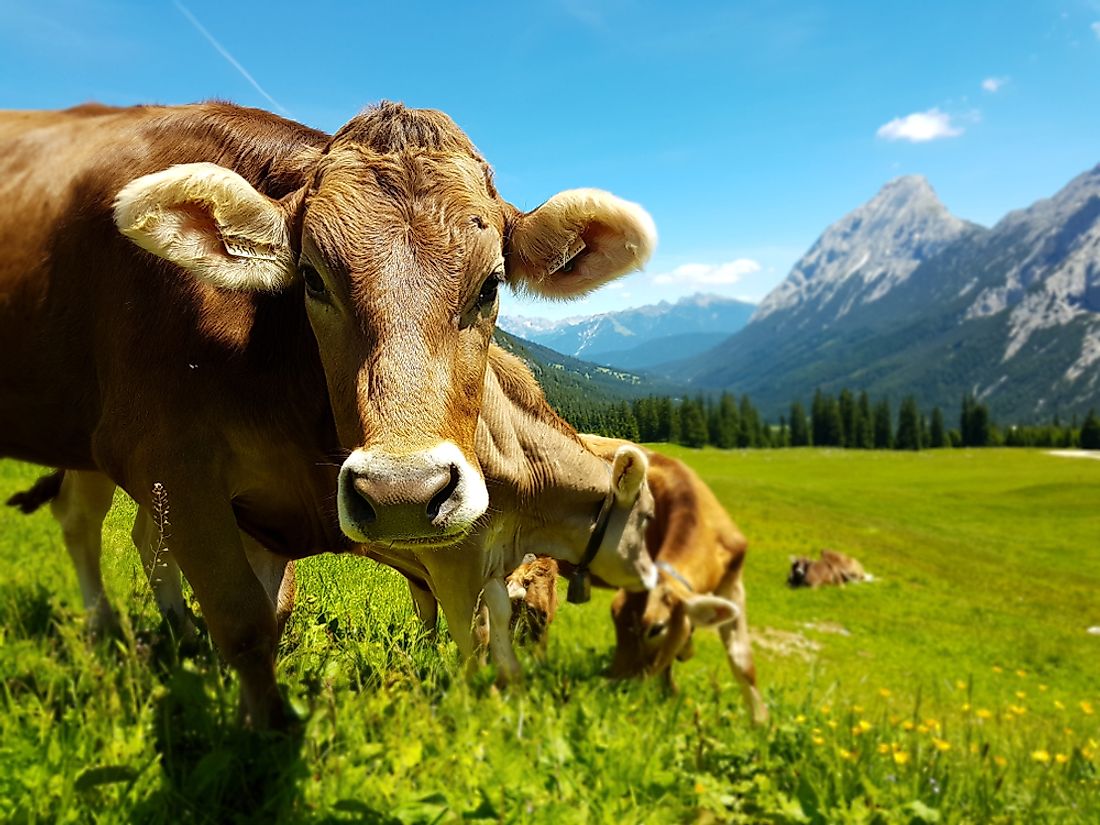The Economy Of Austria

The economy of Austria is that of a fully industrialized country, with a highly developed market economy, skilled labor force, and a very high standard of living for its population. Austria is part of the European Union (EU) and its economic laws and regulation must meet EU standards. Austria, like most EU countries, also uses the Euro as its currency and is closely tied to the economy of other EU member states. According to the Economic Complexity Index (ECI), Austria has the 10th most complex economy in the world. In 2014, the gross domestic product (GDP) of Austria was $436B and its GDP per capita was $47.7k.
Leading Industries In Austria
In Austria, service jobs involve 74% of the labor forces, followed by industry jobs at 25.3% and agricultural jobs employ only about 0.7% of the labor force. Many of Austria's industrial jobs are in the mechanical, steel, chemical, electrical and electronics industries. In Austria's service job sector, most people either work in the trade sector or in the growing tourism industry of the country. For Austria's few agricultural jobs many people work in cattle farming, as part of the country's growing number of organic farms or work in the small but thriving wine business.
Top Export Goods and Partners:
In 2014, Austria exported a total of $162 billion worth of goods. That makes the country the 29th largest export economy on the planet. The major exports of Austria are packaged medicaments ($6.39B), vehicle parts ($5.11B), cars ($4.72B), human or animal blood ($2.8B) and combustion engines ($2.74B). The top export partners of Austria are Germany ($45B), Italy($10.6B), the United States of America ($10.4B), Switzerland ($9.5B) and Hungary($6.77B).
Top Import Goods and Partners:
In 2014, Austria imported a grand total of $169 billion worth of goods, making the country the 28th largest importer on Earth, and giving the country a negative trade balance of 7.21 billion dollars. The major imports of Austria are cars ($9B), crude petroleum ($5.96B), refined petroleum ($5.69B), vehicle parts ($4.42B) and packaged medicaments ($3.69B). The top import partners of Austria are Germany ($65B), Italy ($10.8B), China ($9.1B), Switzerland ($8.9B) and the Czech Republic ($6.93B).
The Challenges and Future of Austria's Economy
The challenges currently facing Austria's economy go back to the global financial crisis that has affected every economy on Earth. Despite Austria being in good economic and financial shape compared to other countries, the crisis weakened Austria's export market. Austria's banks are also still reacting to the repercussions of the dismantling of the government-owned Hypo Alpe Adria bank. There has also been political and economic unrest not only from the continued echoes of the global financial crisis but from the Syrian refugee crisis, the unrest over the Russia-Ukraine conflict, the Euro debt crisis and Brexit in recent years. The economy has been showing signs of improvement over the last year, however, public debt has reached a post World War Two high.











